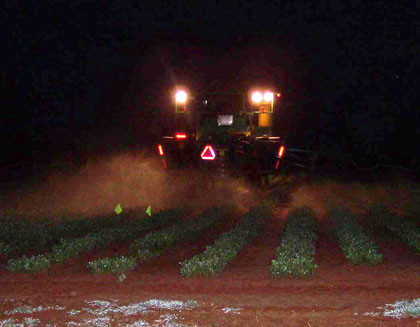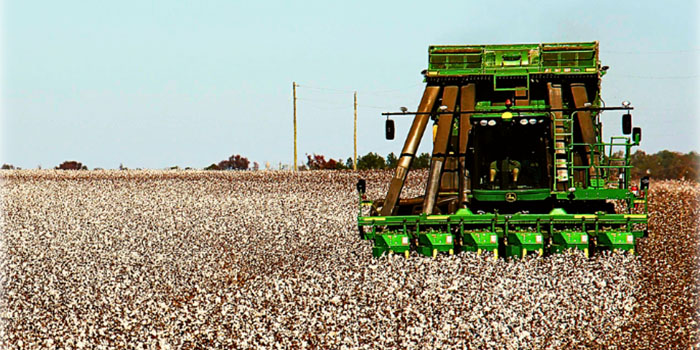Most Georgia peanut farmers do not spray fungicides on their crop at night. But University of Georgia plant pathologists say nighttime is the best time to spray for white mold disease.
“The key to treating white mold is to get the fungicide through the dense leaf canopy onto the crown of the plant and along the limbs,” said Bob Kemerait, a UGA Extension plant pathologist based in Tifton.
“Unfortunately, during the daytime, a lot of that fungicide is intercepted by the leaves.”
To compensate, growers have to use water or irrigation to attempt to redistribute the fungicide to where it’s most effective. “If peanuts are sprayed at night, the leaves are folded up and you have much more of a direct path to the interior of the plant where you need protection from white mold,” said Kemerait.
Many farmers are hesitant to spray at night due to the excessive hours they’re in the field and the inconvenience of later nights or earlier mornings.
“A lot of growers, because of the idea of spraying at midnight or being up at 3 a.m. to spray peanuts, simply say, ‘I’m just not going to do it,’” Kemerait said. “Those who do spray at night are very satisfied with the results.”
Nighttime spraying is an option thanks to Global Positioning Systems technology. GPS keeps the tractor on the row, in case the farmer’s visibility is hindered because of lack of light.
Nighttime fungicide applications were developed by UGA Extension plant pathologist Tim Brenneman based on his observations of farming practices in Nicaragua.
The new strategy is important because of the prevalence and potential severity of white mold (southern stem rot) disease. Slerotium rolfsii, the causal agent of white mold, is a fungus that survives in the soil between cropping systems. It waits there for the next susceptible crop to be planted. White mold fungus grows and attacks peanut plants along the soil line and near the soil surface. The limbs, crown and pegs of peanut plants, and the pods are often completely destroyed as a result.
“I would say it’s the No. 1 diseases our growers need to be prepared to control,” Kemerait said.
While white mold remains a threat to the peanut industry, the damage it causes have been hampered by improved management strategies implemented by Kemerait, Brenneman and other UGA College of Agricultural and Environmental Sciences peanut researchers.
“We’ve got improved fungicides. We’ve also got some management strategies; spraying at night time and spraying early in the season,” Kemerait said. “We haven’t eliminated the problem by any means but we have a stronger arsenal in which to protect the peanut crop.”
For more information about peanut research at UGA, see uga.edu/commodities/fieldcrops/peanuts/.





